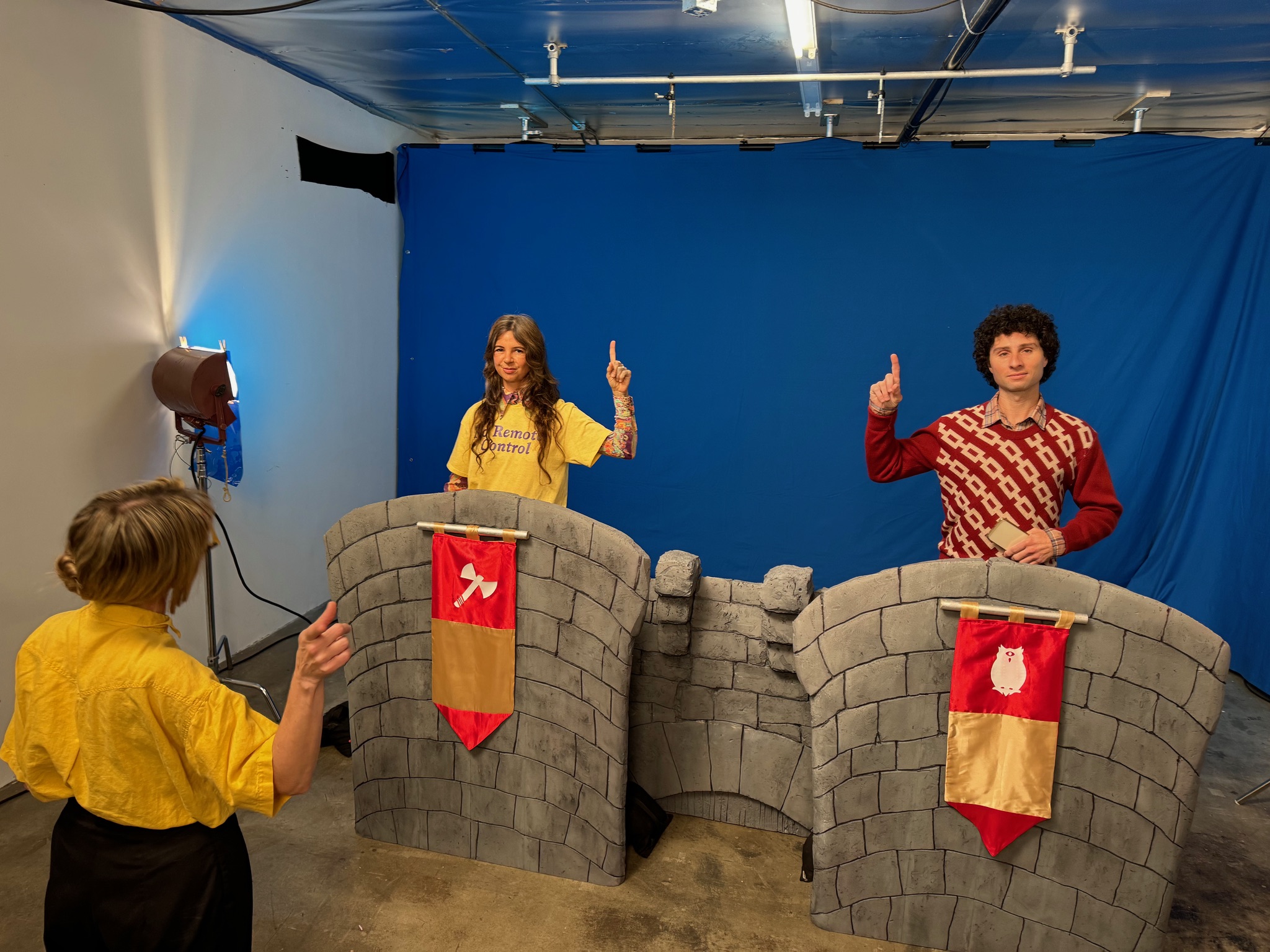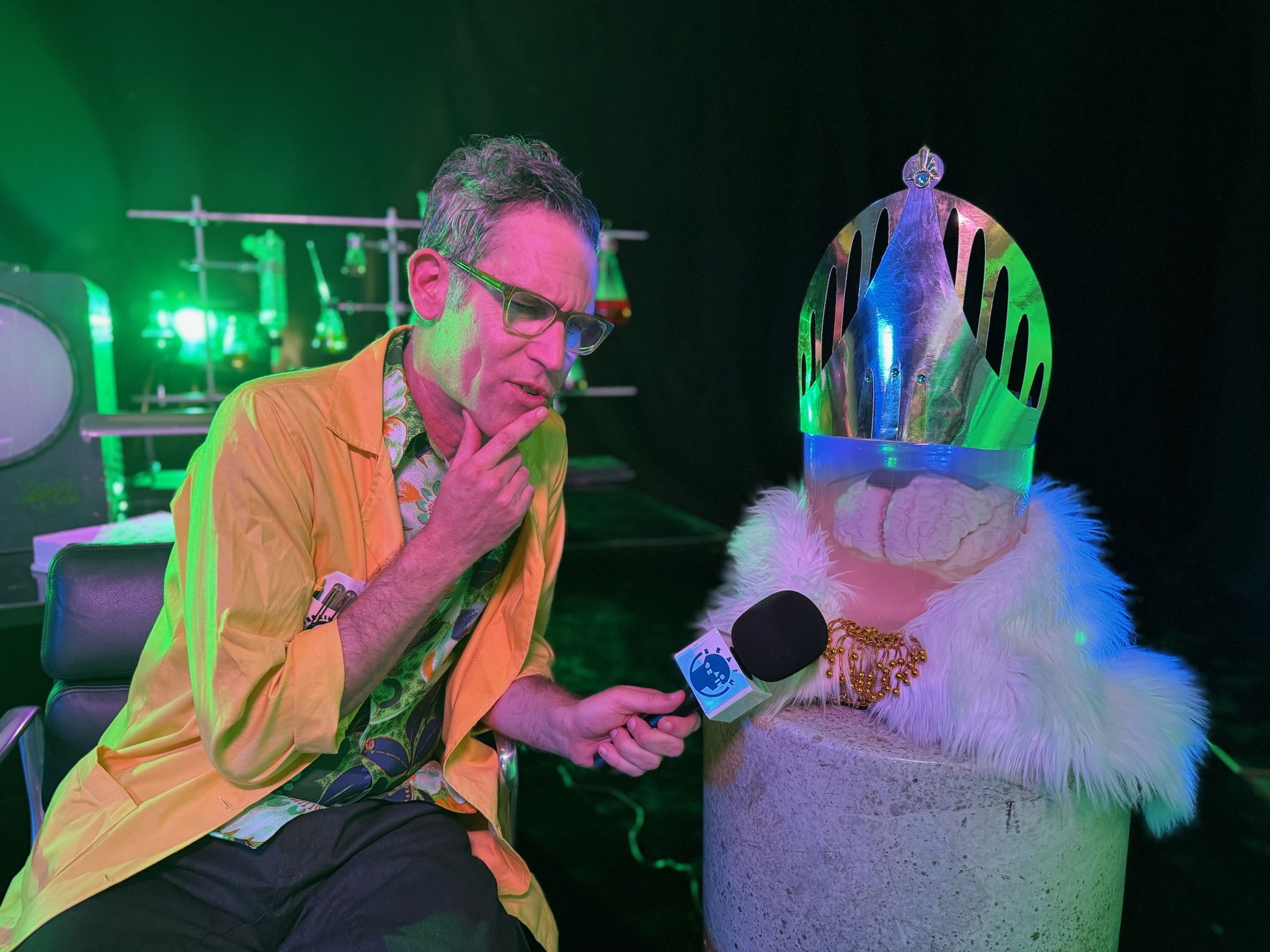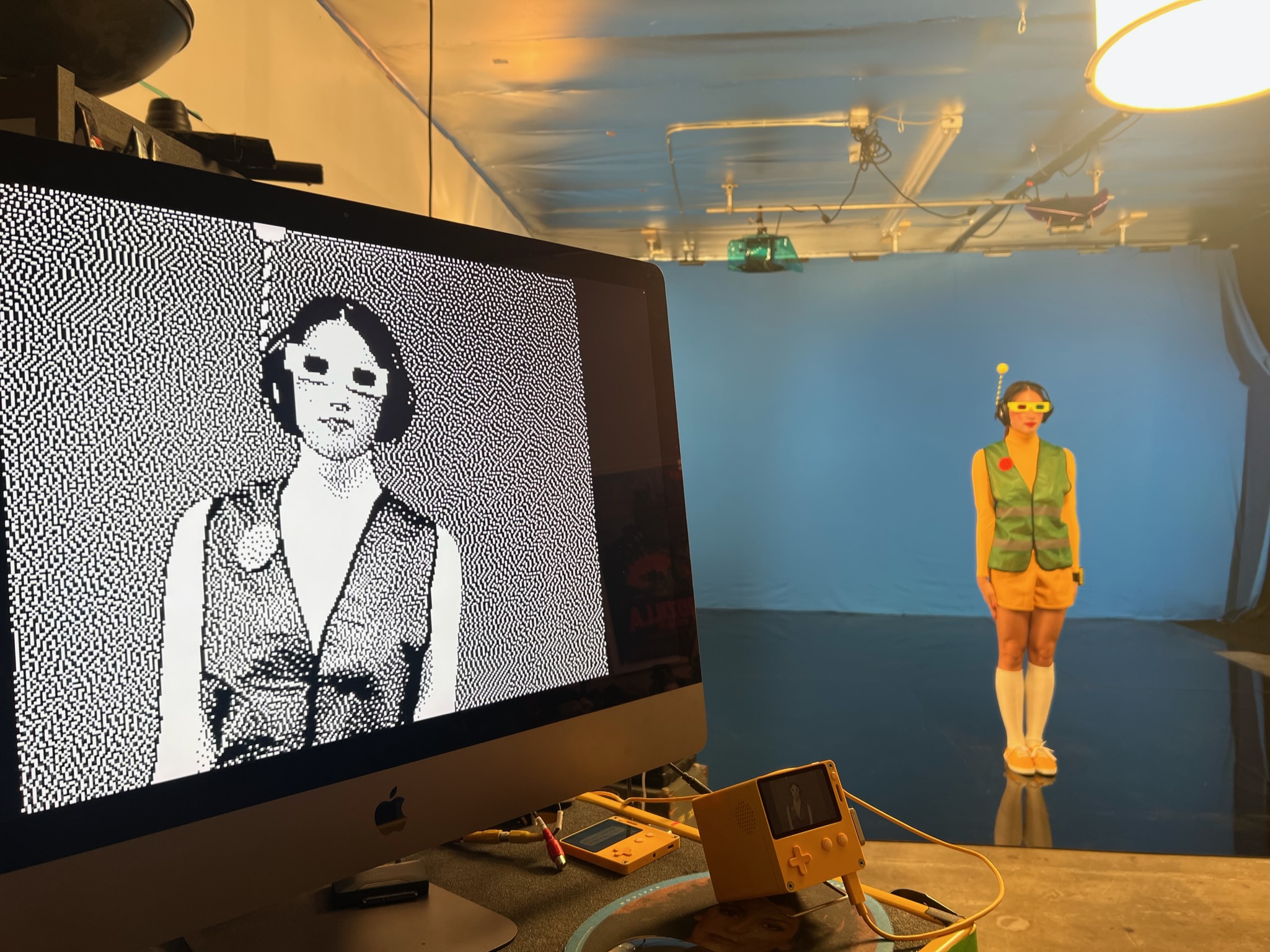While the world is preoccupied with the Nintendo Switch 2 and the continuing rise of more powerful PC gaming handhelds, Panic’s Playdate remains such a weird and wonderful anomaly where some of the most unusual indies are being made within the console’s unique constraints. Perhaps the strangest of these is Blippo+.
It’s not exactly a game in the traditional sense but rather a window into the alien planet of Blip, albeit seemingly not too dissimilar to ours, as you get to know them through the medium of television, via a cable TV guide interface – or the EPG (Electronic Progam Guide). Despite the lo-fi nature of the Playdate, it turns out it’s capable of video playback through that 1-bit resolution, but it can also stream it live so that everyone is essentially tuning in to watch the same programme at the same time, which then changes every week.
Streaming lo-fi TV
“We just went pie in the sky and created this huge slate of shows that was all designed to how we would want to experience it,” Evans tells me over Google Meet. Bechtolt, sitting beside her, adds, “We didn’t want it to feel small or like it was just teasing the idea of video. It had to feel completely immersive and completely real.”
Of course, rather than taking this to Netflix, they pitched it to Panic, with whom Bechtolt had already had a longstanding relationship, having also played in a band with the company’s co-founder, Cabel Sasser, decades earlier. “Cabel had shown us a prototype of the Playdate and invited us to make something for it, and I think at the time we were like, we could release an album on this,” he recalls. “But that invitation kind of fell by the wayside as we toured non-stop [until the pandemic].”
“To their enormous credit, and I think that’s what differentiates Panic from so many other entities in the world, they saw the vision, and they understood it immediately,” Evans says about Panic’s response to the Blippo+ pitch. “We gave them a number, they said, “Okay,” and paid us that number, and then we just started shooting immediately.”
Lockdown creativity
There were obvious constraints, with every show episode, be it a soap, sitcom, talk show, or news report, lasting just a minute long, while the programming was all conceived and made by Bechtolt and Evans, in collaboration with video artist JJ Stratford, in a scrappy, all-hands-on-deck spirit echoing public access television. However, there were also significant opportunities to make Blippo+ during the pandemic, as the LA-based band discovered they had access to a vast pool of resources and talent they wouldn’t have had access to at any other time.
“We had this amazing customer, Kiki Stash, who would have been working hard on shooting movies, and instead, she was hanging out with us every day on set building these amazing worlds,” explains Evans.
“When we were shooting Clone Trois, which is a medical soap opera, we found ourselves at a medical prop house the size of an IKEA, and we were the only people in this entire place for a week,” adds Bechtolt. “It felt like we were making something in the apocalypse.”

Shooting in real-time as 1-bit
Stratford had also amassed a large amount of analogue TV equipment that had been discarded by studios when they switched to digital, providing them with access to a state-of-the-art 1980s TV studio. Panic had also helped by creating custom software that allowed them to preview what they were shooting in real-time as 1-bit monochrome. “When we experimented with video on Playdate, the dithered effect that came through combined with a high frame rate made it look kind of ghostly and beautiful, so it was just really aesthetically compelling to us,” Bechtolt explains.
However, during filming, it also became clear that Blippo+ as an idea was too good to be confined to the Playdate’s 2.7-inch monochrome display. “We had had this idea at the very beginning that it would be relatively cheap to shoot this because we wouldn’t have to build elaborate sets, but we just happened to have a great team and nobody wanted to do it halfway,” Evans explains.
Adding, “It just became increasingly obvious that there was something bigger here and that the world we were building was enormous. People needed to see the costumes and the makeup and the sets and the performances in full colour.”

The Switch and Steam ports don’t just benefit from more colour and detail (though there’s also an option to view it in its original 1-bit monochrome), but also a different way of experiencing Blippo+’s shows. Whereas the Playdate’s version is 11 weeks of programming streamed live and then looped in perpetuity, the colour versions can be experienced offline. Shows still run according to a schedule, but once you’ve watched enough, you’ll receive a message to download new data packets, which update the content to the following week, while you’ll also get the option to move back and forth.
It’s almost like a slightly more linear version of live-action mystery Immortality. “It’s been funny watching the fans whenever we release any drips and drabs of colour stuff in teasers, which adds a level of narrative to them,” says Evans. “Really small details in the background get lost, and there’s a lot of stuff going on in every one of these sets, so I think it’ll be fun when it pops out a bit more.”
Blippo+ is available as part of Season 2 of Playdate, and the colour version will release on PC and Nintendo Switch on 23 September.
